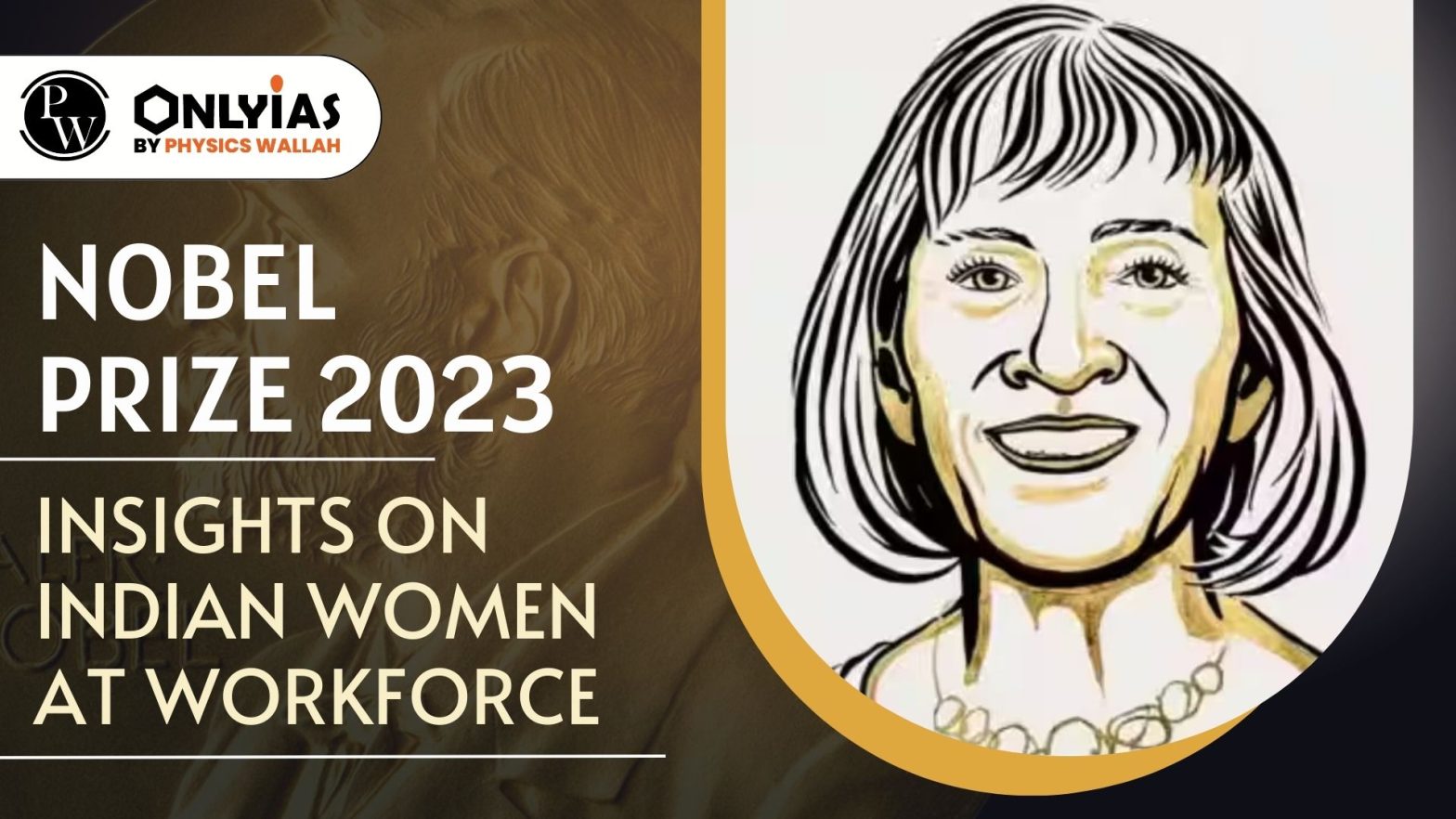Context:
Indian women in the workforce
- Participation: According to Indian Census 2011, there are 587 million Indian women, i.e., 48% of the population.
- As per World Bank estimates: the participation of Indian women in the labour force declined from over 26% in 2005 to 20.3% in 2019.

Indian Women in the Workforce; A Step Towards Gender Equality
- Boost Growth & Development: Ensuring Indian women participation are required to boost GDP growth rate and achieve the target of a $5 trillion economy by 2030.
- Gender Equality and Rights: It would enhance women’s ability to participate equally and help to access decent work which promotes meaningful participation in economic decision-making.
- Achieving the 2030 Agenda for Sustainable Development: Empowering Indian women in the economy and closing gender gaps in work are key to achieving the Sustainable Development Goals.
- (Goal 5: to achieve gender equality, Goal 8: to promote full and productive employment and Goal 10: reducing inequalities).
Women earlier received Nobel Prize in Economics:
- Only two women scholars, Elinor Ostrom in 2009 and Esther Duflo in 2019 had won this honor since 1969.
|
ALSO READ: HUMAN DEVELOPMENT AND SUSTAINABLE DEVELOPMENT
What are the challenges faced by Indian women in their participation in the workforce?
- Gender Pay Gap: According to the World Inequality Report 2022, Indian women earn only 18% of the labour income.
- Imposter Syndrome: A 2020 KPMG study revealed that almost 75% of female executives across industries have faced imposter syndrome.
- Imposter Syndrome is a self-doubting tendency that leads an individual to feel skeptical and undeserving of their accomplishments.
- Difficult to overcome Career Gap: According to an Indeed survey, 67% of Indian women respondents find it challenging to re-enter the workforce due to pregnancy, childbirth, and caring for children or the elderly.
- Barriers in Leadership: The difficulty of juggling work and home obligations often prevents women from pursuing leadership positions.
- Social Norms: Household work is still considered a duty of women only.
- Impact of Covid-19: It immediately impacted women, 37.1% lost jobs (compared to 27.7% men) within April 2020-2021, as per the Centre for Monitoring Indian Economy (CMIE) data.
Way Forward
- As per International Labour Organisation, there is a need to:
- Ensure equal pay for work of equal value through legal protection, wage transparency, and gender-neutral job evaluation.
- Address occupational segregation by challenging preconceived notions about work.
- Implement gender-responsive policies to safeguard Indian women’s employment.
- Empowering Indian Women through training, and development opportunities.
- Bridging the Gender Gap: Strategies to Address Gender Disparities for Indian Women.
- Promoting flexible working arrangements is a need of the hour as hybrid work allows women to be more efficient and productive, and to increase their visibility with senior leadership.
- Encourage Indian women to enter traditionally male occupations by which women receive better pay.
- It is visible in Uganda, where women made it practical.
- Need to provide training and development opportunities.
Also Read: Reservation Of Women In Legislature
Conclusion
Empowering Indian women in the workforce is not only essential for economic growth but also aligns with global goals of gender equality. Overcoming challenges such as the gender pay gap, imposter syndrome, and career gaps requires concerted efforts through policy interventions, flexible work arrangements, and promoting inclusivity, ensuring Indian women contribute significantly to the nation’s development and prosperity.
| Attempt the PY Prelims Question
With reference to the Indian economy after the 1991 economic liberalization, consider the following statements:
- Worker productivity (rs. per worker at 2004-05 prices) increased in urban areas while it decreased in rural areas.
- The percentage share of rural areas in the workforce steadily increased.
- In rural areas, the growth in non-farm economy increased.
- The growth rate in rural employment decreased
Which of the statements given above is/are correct?
- 1 and 2 only
- 3 and 4 only
- 3 only
- 1, 2 and 4 only
Ans: B |
![]() 11 Oct 2023
11 Oct 2023


